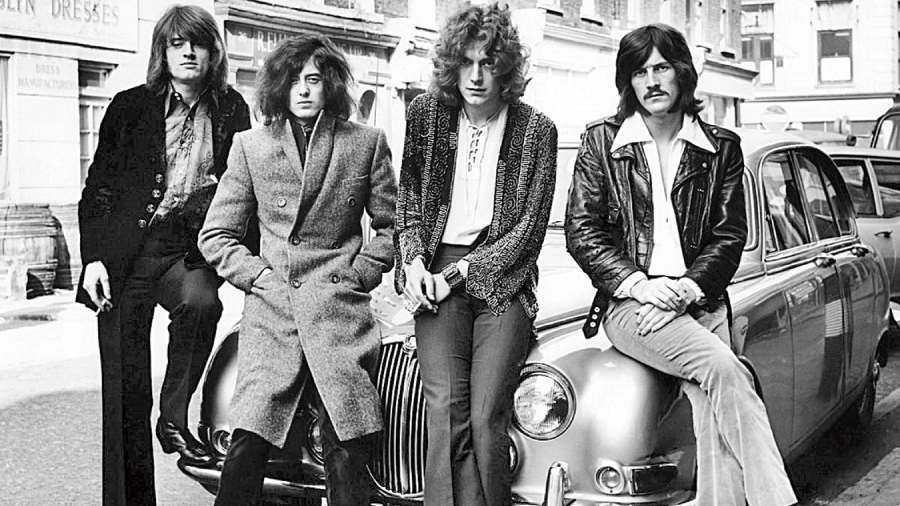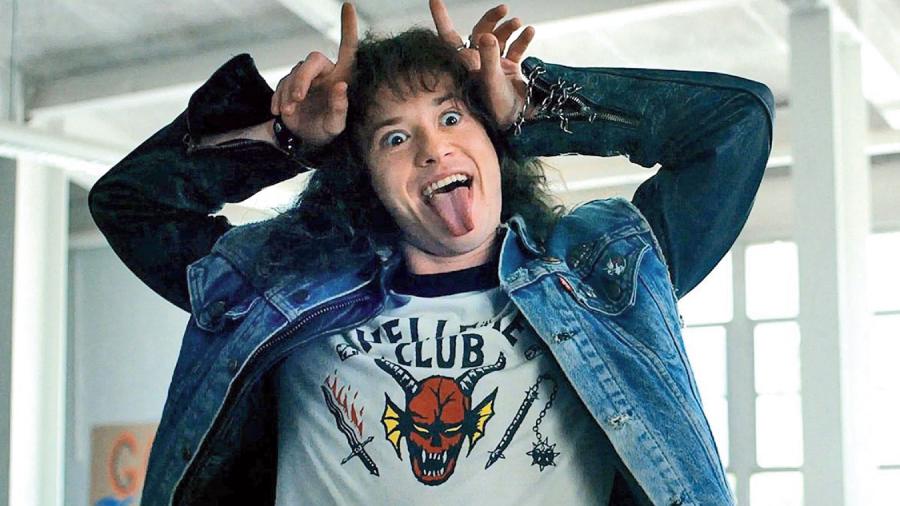The ’80s through Eddie Munson in Stranger Things
Although set in the fictional town of Hawkins, Stranger Things has always been on point with their ’80s references. With Eddie Munson, creators Duffer Brothers once again created a supremely memorable character that embodies much of what the 1980s America was about, especially when it came to metal music and the infamous Satanic Panic.
The origins of metal music can be traced back to the 1960s with its pioneering acts being Led Zeppelin and Black Sabbath. By the late 1970s, it was one of the most popular genres. Originating in the United Kingdom as well as flourishing across the Atlantic, heavy metal music was characterised by rebellion against the norms and anti-establishment sentiments. Pop culture was heavily moving towards a more risque nature than it had before with voices of resistance rising against more traditional pillars. And metal music provided the perfect musical outlet for such sentiments.

Led Zeppelin

Black Sabbath
Simultaneously, there was also a rise in the collective fear of what is known as the Satanic Panic. It was not only associated with metal music but also with the roleplay game, Dungeons & Dragons (which has been an integral part of Stranger Things since its very first season). The Satanic Panic was largely fuelled by murders, especially serial killings that took place during the ’70s and the ’80s, like the killing spree by Richard “Nightstalker” Ramirez and the Son of Sam killings. And many of the perpetrators in such cases turned out to be metal music fans, leading to an assumption that the genre of music itself had negative influence.
Eddie Munson remains misunderstood
The media covering these stories highlighted the pentagons that were often found on the scene and the dark underground parties the perpetrators might have visited as a contributor to their degeneration. In 1984, 17-year-old Gary Kasso murdered his friend while high on drugs and later professed that he was a “Satanist”. On the day of his arrest, Kasso also wore an AC/DC T-shirt and was known to be a heavy metal fan. Associations and speculations were not far behind, and the media heavily aided the inclusion of metal to the narrative of what must have caused an underage boy to murder his friend.
Moreover, in 1985, the Parents Music Resource Centre made a playlist of 15 songs that they deemed inappropriate. Among them, nine were metal. Called “The Filthy 15”, it was formed to encourage extra warnings or ratings to content that contained references to violence, the occult and sex, among other things. It is without doubt that there were criminals of the time that were fans of metal music, but to ostracise an entire genre for the same is ignorant, at best and foolish, at worst.
Liisa Ladouceur, a contributor to Satanic Panic: Pop-Cultural Panic in the 1980s, told Vice, “It’s not just that parents were afraid of Satan. They were afraid, period. You have to remember that in the early 1980s there were a lot of major shake-ups in the traditional American family. Divorce rates had been surging since the 1970s, and more women were working outside the home than ever before. So, for the first time, parents were trusting their children to strangers at day care in great numbers, plus they often didn’t know what their teenagers were up after school because they weren’t home to supervise them. This was legitimately worrisome for many. So, when tabloids and TV talk shows started doing stories on Satanic cults and devil worship, it was easy for them to believe this was a genuine threat, and to be afraid for the safety of their kids.”
Eddie Munson, therefore, embodies a pivotal moment in American pop culture. With his shaggy hair, ring-covered fingers and Hellfire Club
T-shirt, he is the “rebel” teen that ’80s parents warned their children about. He stands at a stark contrast to the golden boy Jason who is the typical high school heartthrob. However, it is interesting to see how their choices are what ultimately define them.
Contrary to popular perception, Eddie is sweet, and caring. Jason, on the other hand, is the ready victim of fear perpetuated by the unconventional. The Satanic Panic, therefore, not only scapegoated musicians that differed from the norm, but also their fans and admirers. Eddie Munson remains misunderstood to most of his townspeople except those he was close to. It is also a reflection of the confusion, doubt and fear that the unknown and unconventional perpetuates. Such violent ostracisation might seem to be more mellowed down in today’s pop culture but it unfortunately, still exists in some measure, making it difficult for the uncommon to thrive without extra effort.











